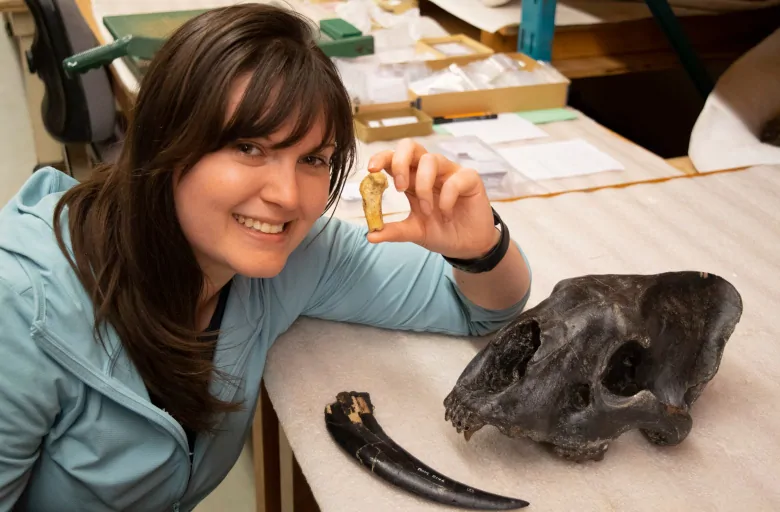Canada's first sabre-toothed cat fossil found in Medicine Hat

(Danielle Dufault/Royal Ontario Museum)
During the last ice age, huge cats bigger than an African lion prowled Alberta — including the fearsome beast commonly known as the “sabre-toothed tiger,” a new study shows.
The proper name for the extinct predator with foot-long, serrated knife-like canines is Smilodon fatalis.
And up until the discovery of the fossil from Medicine Hat, Alta., the species had never been found further north than Idaho.
That’s why a couple of small fossils caught Ashley Reynolds’s eye as she was rummaging through the drawers at the Royal Ontario Museum in Toronto.
“What struck me is they were listed as being Smilodon from Alberta,” recalled Reynolds, a PhD student in paleontology at the University of Toronto. “And I knew that Smilodon wasn’t really considered to be a Canadian species.”
The drawer was part of a trove of 1,200 specimens collected in the 1960s by University of Toronto paleontologist C.S. Churcher and his team from the bluffs along the South Saskatchewan River near Medicine Hat that had been roughly sorted but never examined in detail.
Reynolds, who was researching the growth patterns and life histories of extinct cats by looking at their bones, decided to look more carefully at what cat fossils Churcher had found so they could be used in further research.
One of the fossils labelled “Smilodon” was too small a piece to be identified.
But another, a bone from the ancient cat’s right front paw, was identical other Smilodon bones from the same part of the body, and was positively identified as Canada’s first Smilodon.
Reynolds and colleagues published their findings Friday in the Canadian Journal of Earth Sciences. The study was funded by the Natural Sciences and Engineering Research Council of Canada.
Full Story:

